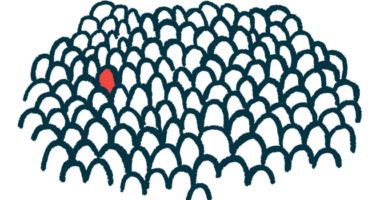Genetic Test Diagnoses Infant With CLN10 After Unexplained Seizures
Genetic testing recommended for families at risk of having a child with Batten

A newborn with microcephaly (unusually small head) and difficult-to-treat seizures was diagnosed with CLN10 disease, or congenital Batten disease, after a genetic analysis confirmed a mutation in the CTSD gene, a case study reports.
Researchers stressed the importance of offering genetic testing and counseling to families at increased risk of having a child with Batten to enable prenatal diagnosis.
The case study, “Congenital neuronal ceroid lipofuscinosis: an Important cause of unexplained seizures in newborns,” was published in the journal Indian Pediatrics.
CLN10 disease is an extremely rare type of Batten disease
Batten disease, also known as neuronal ceroid lipofuscinoses, refers to a group of rare neurological conditions caused by a genetic defect, or mutation.
Such genetic changes ultimately cause the buildup of a substance called lipofuscin in cells and tissues in the body, and this buildup becomes toxic mainly to nerve cells and cells of the eye, skin, and other tissues.
Mutations have been identified in 14 genes, named CLN1 through CLN14, and cause different disease types, also referred to as CLN1 through CLN14 disease.
CLN10 disease is an extremely rare type of Batten disease caused by mutations in the CTSD gene. This gene provides instructions for producing cathepsin D, an enzyme that works to break down proteins. Mutations in the CTSD gene lead to a complete lack of enzyme activity, resulting in the accumulation of lipofuscin.
Symptoms of CLN10 develop from birth, and include severe breathing problems, muscle stiffness, and persistent and long-lasting seizures. Newborns with this type of Batten often do not survive long, from hours to weeks, after birth.
Baby boy experiences seizures 26 days after birth
In the report, a team of researchers in India described the case of a baby boy, born at 34 to 36 weeks of gestation, who was diagnosed with CLN10 disease after genetic testing.
At birth, the baby weighed 2.2 kg (4.85 lbs) and showed no symptoms. However, 26 days later, he started to develop seizures, drowsiness, and difficulty breathing.
He had a family history of consanguinity (being descended from the same ancestor), and his mother had already had a baby with microcephaly who died 15 days after birth with the same type of symptoms.
Now, this baby had abnormal changes in his face, microcephaly, and enlargement of the liver and spleen. No signs of life-threatening immune responses to an infection were observed.
He was treated with anti-seizure medications but did not respond to the treatment.
Examination of the eye revealed a cherry-red spot in the retina — a thin layer of nerve cells lining the back of the eye — which occurs in several conditions called neuronal lipid storage disorders.
As such, the researchers analyzed a disease panel of such disorders, including Gaucher disease, Niemann-Pick disease type A and B, Krabbe disease, Pompe disease, Hurler syndrome, and Fabry disease, but all were excluded.
The boy underwent an electroencephalogram, an examination that measures the brain’s electrical activity, which turned out to be normal. However, brain MRI showed atrophy (shrinkage) in the cerebellum, the area of the brain that controls coordination and balance.
Genetic testing revealed a mutation in the CTSD gene (c.299C>T), establishing the diagnosis of CLN10 disease.
The baby was discharged home, but he died due to seizures 80 days (nearly three months) after birth. His family was offered genetic counseling for subsequent pregnancies that would help in prenatal diagnosis.
CLN10 disease “should be suspected in newborns and infants presenting with unexplained microcephaly and intractable seizures,” the researchers wrote, particularly in those whose brain imaging revealed atrophy in the brain and cerebellum.








